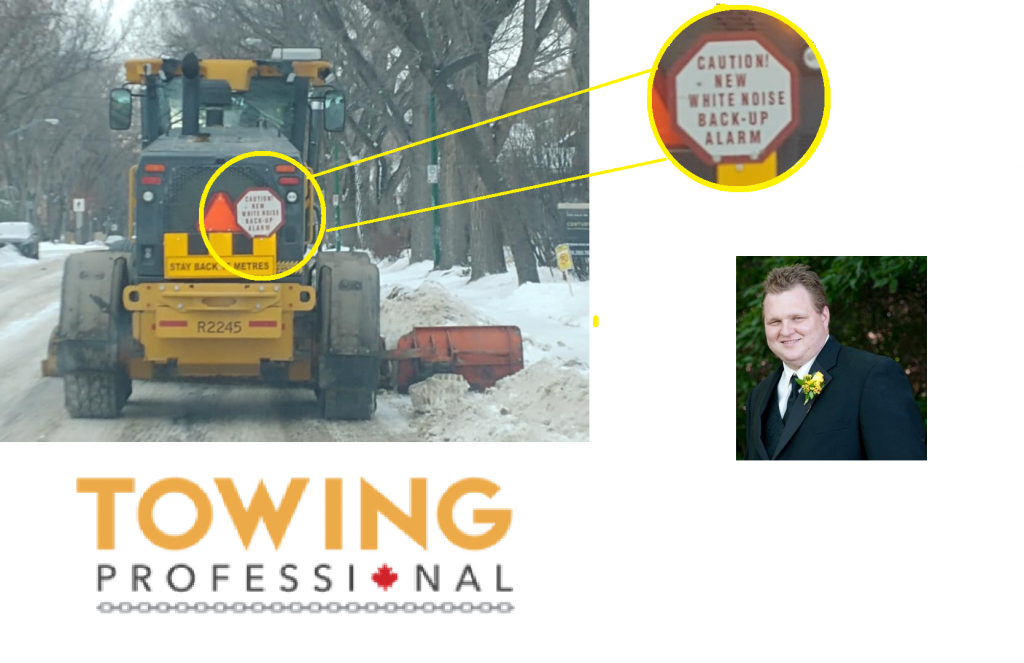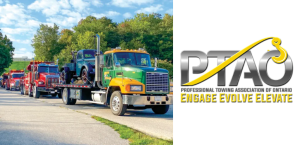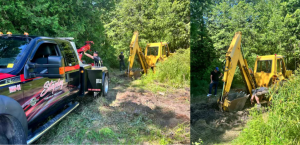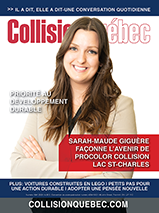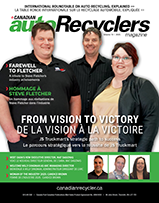Saskatoon, Saskatchewan — Earlier this week, Saskatchewan towing professional Chris Kosty was taken aback by a sign on the back of a municipal snow plow.
It read: Caution! New white noise back-up alarm.
“I was travelling behind one of these guys and then I noticed the sign. My first thought was ‘I think my truck has one of these too–it’s called the engine,” Kosty joked, before wondering if “this is what the city does when they want to cheap out on an actual backup alarm.
“There is probably actually something to this, but when I think of white noise I think of the machine my wife has to help herself fall asleep that just creates a silent dull noise in the room like static or something,” says Kosty. “So if you emanate that from a truck trying to back-up, to me, it seems like that isn’t getting anybody out of your way.”
So, what exactly are white-noise back-up alarms, and are they really as likely to send inattentive pedestrians off to sleep as they are to get them to notice the several tonnes of industrial equipment barrelling toward them?
Since the 1970s, shrill back-up alarms have been widely used to prevent inattentively dawdling pedestrians from being mowed down by industrial equipment.
While they may save lives, they do not warm hearts. City officials frequently receive calls-of-complaints from residents annoyed by blaring alarms waking them in the middle of the night.
White noise back-up systems attempt to prevent this problem. Barrage people immediately behind a vehicle with sound best compared to TV static, they are virtually silent from just a few metres away from the vehicle.
They also claim to have one other key benefit over traditional systems–one that may make them safer than traditional systems. In areas with multiple alarms blaring, it can be quite difficult for pedestrians to identify where the alarms are coming from. In fact, even with one alarm, the high-frequency sounds are not easily used to infer which direction a slow-moving vehicle is coming from.
White noise systems offer a more elegant solution. My playing multiple frequencies at once, pedestrians are far more likely to turn in the right direction. Even people with ear muffs, headphones and some level of hearing loss can still identify the alarm sounds.
Installing back-up alarms is an inexpensive process, though wiring the systems to work in-sync with brake lights may require the services of an expert. Because many systems direct sound right behind a vehicle, not every model is appropriate for vehicles conducting towing operations. Systems designed to reach the back of a vehicle while it has a car hitched on do exist.

